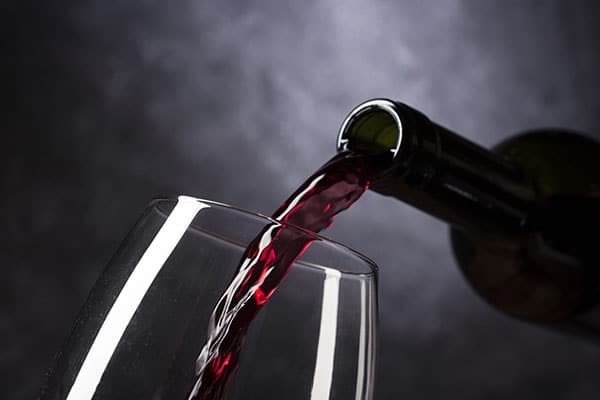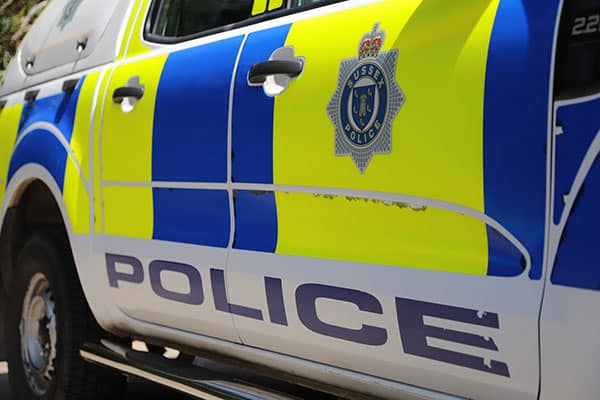
Alcohol and firearms
Information on the consequences of alcohol-related offences for certificate holders, including convictions for drink-driving.
Get information on the legal shooting season for mammals and birds in the UK.
Apply for funding for your project or make a donation today
Comprehensive information and advice from our specialist firearms team.
Everything you need to know about shotgun, rifle and airgun ammunition.
Find our up-to-date information, advice and links to government resources.
Everything you need to know on firearms law and licensing.
All the latest news and advice on general licences and how they affect you.


Home » Firearms » Antique and imitation firearms » Proof marks
Many people do not understand the importance of proof marks. Bill Harriman focuses on the role they play in safe shooting.
For the past 30 years, we have seen the gradual phasing out of the old Imperial system of weights and measurements in favour of the metric system. I have always counted myself fortunate to be a member of the ‘transitional generation’, who has had the opportunity to see both systems in parallel and adapt from one to the other.

For those of my parents’ generation who were reared on the imperial system alone, metrication can be a nightmare.
A gun’s proof marks are a permanent safety aide- memoire to give you the correct information for choosing a cartridge that can be used safely in your particular gun. When you buy a box of cartridges, always read the manufacturer’s data printed on it and use that information to satisfy yourself that its contents are safe to use in your gun.
Before we get down to the technical details, we need to understand the history of the way in which shotguns have been proofed in modern times.
From 1896 onwards, British guns were always marked with the maximum service load – in ounces – of shot for which the gun was proved. Additionally, the type of powder – black or smokeless – was specified. This was normally just in the simple terms of ‘nitro proof’, though specific nominated powders, such as Schultze, sometimes appeared instead.
After 1925 and until 1989, this information was supplemented by the inclusion of the chamber length in inches. Thus, armed with these three pieces of information, the shooter could choose a cartridge that fell within their limits, knowing this was safe to use in his or her gun.
In 1955, the first metric markings appeared, with the option to have the chamber length marked in millimetres. Table one gives the metric equivalent for the imperial chamber length.
2in – 50mm
2 ½ in – 65mm
2 ¾ in – 70mm
3in – 75mm
From 1984 to 1989, where metric proof was used, it was marked in kilograms per square centimetre, for example 900 or 1,200kg. These were the standard and magnum proof pressure values respectively.
Alternative imperial proof marks introduced in 1954 gave service pressures in tons per square inch, marked as ‘3 tons’. In the case of the Birmingham Proof House, this was marked as ‘3 tons per square inch’ until 1954.
In 1989, all proof data was marked in metric using the bar as the unit of measurement. The use of kilograms per square centimetre was dropped. Under this system, 850 bar represented standard proof, with 1200 bar being special or magnum.
While it is possible to use a mathematical factor to convert one pressure unit to another, this conversion is only valid if the two sets of values have been arrived at using the same pressure measuring system. For example, the 1954 Rules of Proof used the Lead Crusher Radial system. This measured pressure in units of tons per square inch.
Today, all International Proof Commission (CIP) Proof Houses use the Radial Transducer system to measure pressure, with bar as the unit of measurement. The two systems are not simply convertible by mathematical means. However, there is sufficient data to give approximate conversions. Table two sets these out in detail.
| Chamber length | Highest mean service pres. Tons per square inch (1954 Rules) lead crusher system | Converted to CIP Copper Crusher (bar) | 1954 Proof Pressure converted to CIP Copper Crusher (bar) |
| 12-2 ½ | 3 | 542 | 867 |
| 12-2 ¾ | 3 ¼ | 587 | 939 |
| 12-3 | 3 ½ | 632 | 1011 |
| 12-3 MAG | 4 | 722 | 1155 |
As the CIP minimum Copper Crusher Proof Pressure is 850 bar and High Performance (Magnum) 1200 bar, the 1954 values as converted to the CIP Copper Crusher System are acceptable.
However, this assumes that any shotgun proved under the 1954 rules is still in proof. If this is the case, the following applies:
| 12-2 ½ | 3 tons | can use CIP approved cartridges marked 12-65 |
| 12-2 ¾ | 3 ¼ tons | can use CIP approved cartridges marked 12-70 |
| 12-3 | 3 ½ tons | can use CIP approved cartridges marked 12-70 |
| 12-3 MAG | 4 tons | can use CIP approved cartridges marked 12-76 |
| To convert tons per square inch to bar | Multiply by | 154.4441 |
| Kilogram per square centimetre | Multiply by | 157.48775 |
| To convert kilogram per square centimetre to bar | Multiply by | 0.980665 |
| Tons per square inch | Multiply by | 0.0063497 |
| To convert bar to kilogram per square centimetre | Multiply by | 1.019716 |
| Tons per square inch | Multiply by | 0.0064748 |
 It should not be assumed that guns proved under the 1925 or earlier Rules of Proof are safe to use with modern cartridges, merely by staying below the shot weight marked on the gun. There is a trend among modern manufacturers to increase pressures to obtain higher velocities. In such circumstances, it is prudent to consider reproof of such guns. A competent gunsmith will advise if reproof is viable.
It should not be assumed that guns proved under the 1925 or earlier Rules of Proof are safe to use with modern cartridges, merely by staying below the shot weight marked on the gun. There is a trend among modern manufacturers to increase pressures to obtain higher velocities. In such circumstances, it is prudent to consider reproof of such guns. A competent gunsmith will advise if reproof is viable. The metric system does not just apply to proof marks, but to cartridges as well. Decision XV- 7 of the CIP requires that all cartridges sold must be tested to see that they comply with internationally agreed standards of pressure, dimensions and performance.
The information given on boxes will show the case length in millimetres, the chamber length in both inches and millimetres, and the shot load in both ounces and grams.
Under the CIP system, the minimum level of proof is based on chamber length. All that you need to do is to match CIP-approved cartridges, marked on the side of the box, to the chamber length of your CIP-proved gun.
In the case of magnum loads, these are only allowed for cartridges over 70mm. Table four gives a list on imperial shot loads in ounces together with their metric equivalent in grams.
| Ounces | Grams | Ounces | Grams |
| 1 ⅝ | 46 | 15/16 | 26.5 |
| 1 ½ | 42.5 | 7/8 | 25 |
| 1 ¼ | 36 | 13/16 | 23 |
| 1 3/16 | 34 | 5/8 | 17.5 |
| 1 1/8 | 32 | 9/16 | 16 |
| 1 1/16 | 30 | 7/16 | 12.5 |
| 1 | 28.5 | 5/16 | 9 |
It is also common for European guns to carry marks that indicate the degree of choke at their muzzles. These are expressed by a series of small asterisks. The larger the number of asterisks, the more open the choke is bored.
Table five gives full details of this choke-marking system. In the case of screw-in chokes, small notches on the edge of the choke represent the asterisks.
| Full | * |
| ¾ | ** |
| ½ | *** |
| ¼ cylinder | **** |
The proof marks on your gun are not stamped there for decorative purposes, or to help historians to date guns.
They are put there for your safety to tell you what loads are suitable for use in your gun. Equally, the information printed on boxes of cartridges has not been put there as an afterthought to fill up a bit of space.
Take ten minutes to have a good look at your gun’s proof marks and make sure that you understand what they mean.
Also, read and understand the information on cartridge boxes and relate it to the marks on your gun. A combination of the two will make sure that you never load an unsuitable and potentially unsafe cartridge into your gun.
Thank you to Roger Hancox, Proof Master of the Birmingham Gun Barrel Proof House, for supplying much of the technical data contained in this article.
If you are unsure about proof markings, take advice from gunsmiths, the firearms team at BASC or the Proof Houses themselves. Proof Masters in London and Birmingham can be contacted at the addresses below:
The Proof Master
The Proof House
48 Commercial Road London
E1 1LP
The Proof Master
The Gun Barrel Proof House
Banbury Street
Birmingham
B5 5RH
Got a question? Email us on firearms@basc.org.uk or call 01244 573 010.
© BASC July 2023

Information on the consequences of alcohol-related offences for certificate holders, including convictions for drink-driving.

Lachlan Nisbet, partner at Brabners lawyers, advises you to be aware of accepting a caution for a minor offence, as these can give licensing officers a reason to revoke your certificates.

Comprehensive guidance on imitation firearms and antique guns, including the legalities around possession and use.